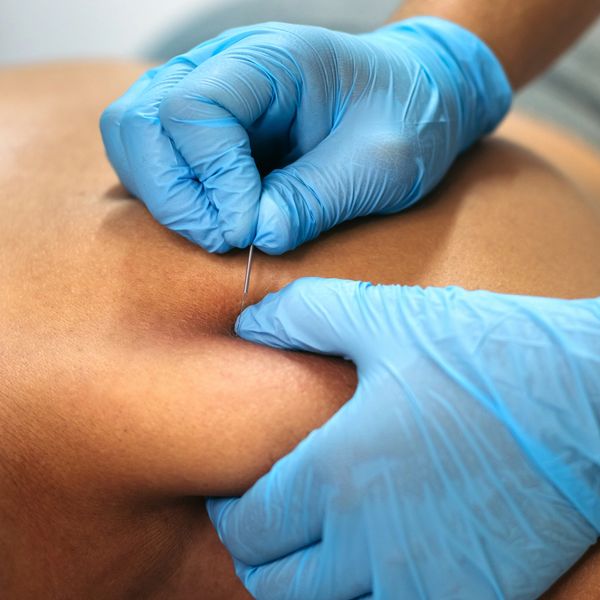How We Treat

Myofascial Trigger Point Dry Needling
Myofascial Trigger point dry needling (TPDN) is a type of manual therapy that uses thin, sterile, filament needles to stimulate muscle trigger points – which are painful or irritable knots in muscle tissue – to release tension and reduce pain. The therapy is based on Western neuroanatomy and techniques, not Eastern acupuncture methods, and aims to create a local twitch response in the muscle, which helps to relax the tight band of tissue, improve blood flow, and promote healing. Trigger points also have referral patterns that can be felt elsewhere in the body, often into an arm or leg. By learning about your pain patterns and performing a myofascial assessment, we can determine which muscles would benefit from dry needling and discuss the treatment in more detail.

Instrument Assisted Soft Tissue Mobilization
Instrument-Assisted Soft Tissue Mobilization (IASTM) is another manual therapy technique using specialized metal tools made of surgical grade steel to apply pressure, friction, and massage to soft tissues like muscles, tendons, ligaments, and fascia. Its purpose is to reduce pain and improve range of motion, leading to better function and quality of life. Treatment is focused on the right amount of pressure to improve your symptoms followed by specific exercises aimed at improving blood flow, muscle activation, and strength of the focused muscle.

Joint Manipulation & Mobilization
Joint mobilizations are rhythmic passive movements of joints aimed at reducing pain and improving mobility. They work great on stiff or painful joints and most patients feel looser immediately after the treatment. Joint manipulations are similar but performed at faster speeds and often create a cavitation, also called a “joint pop or crack”. This is usually reserved for a “stuck” joint. Treatment styles used include Maitland Australian method, Mulligan Technique, and Kaltenborn Nordic style.

Static & Dynamic Cupping
Cupping works on the myofascial pathways of the body and can often lead to immediate reductions in pain and improvements in movement. If massage is compressing the tissue, cupping is decompressing or lifting the tissue and is a much different experience. Static cupping is where one or more silicone cups are placed in and around painful muscles for several minutes, often aimed at increasing blood flow and reducing pain sensitivity in a targeted area. This can lead to mild bruising for several days and is typically saved for people who have enjoyed this method in the past. Dynamic cupping involves gliding the cup along the specific area to promote myofascial mobility and restore movement. It shouldn’t leave any bruises, and is a fairly gentle method of manual therapy.

Strength & Mobility Training
We utilize many forms of movement to help treat our clients and improve their strength and mobility. Most importantly, we focus on educating how the movement should feel so you can include them in your weekly routines and maximize results. During sessions we will utilize kettlebells, isometrics, barbells, cable training, and calisthenics to improve your body’s ability to move well and feel stronger.

Blood Flow Restriction
Blood flow restriction (BFR) therapy is a rehabilitation and training technique that uses a pressurized cuff to partially restrict blood flow to a limb while performing low-intensity exercises. The goal is to build strength and muscle mass, similar to high-intensity training, but with less stress on the joints and tissues. This makes it beneficial for patients who cannot tolerate high-load exercises due to surgery, injury, age, or chronic pain.